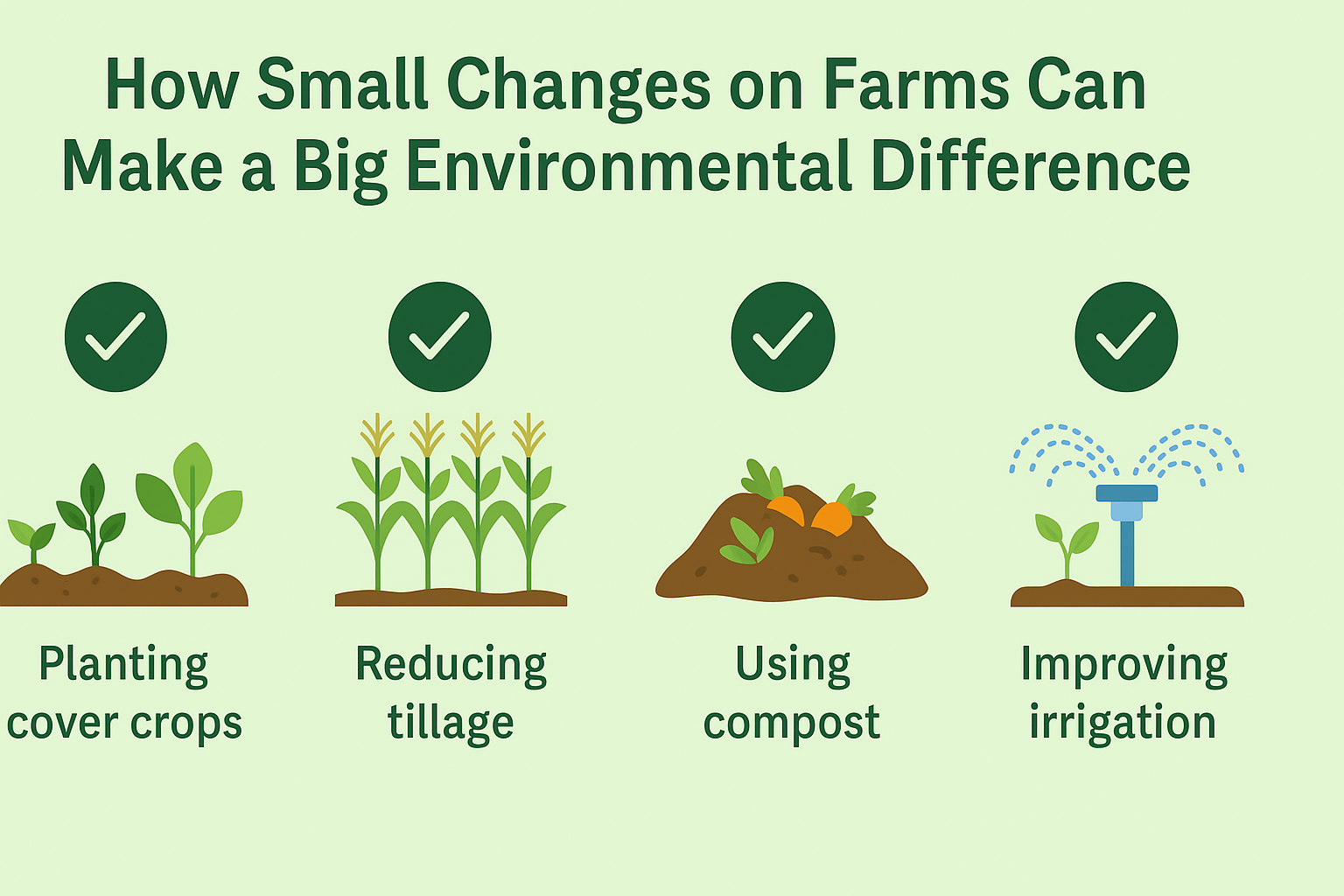
When we think about solving big environmental challenges, like climate change, water scarcity, or soil degradation, it’s easy to assume the solutions must be equally massive. But that’s not always true. In agriculture, even small, practical changes on individual farms can ripple outward and deliver significant environmental benefits.
You don’t need to overhaul your entire operation overnight to make a difference. Here are a few small steps that can lead to big impact, especially when adopted consistently or across many farms.
1. Keeping Soil Covered
Leaving your soil bare exposes it to erosion, sun, and wind, especially in semi-arid regions. One small change? Use crop residues, mulches, or simple cover crops to protect the soil. This slows erosion, reduces evaporation, and helps build organic matter.
Even planting a low-cost cover like oats or rye after harvest can increase soil health and carbon over time.
2. Reducing One Pass of Tillage
You don’t have to go 100% no-till to see results. Simply reducing the number of tillage passes in a season can help preserve soil structure, reduce carbon loss, and lower fuel use.
Less disturbance = fewer emissions + better soil biology + lower costs.
3. Recycling Organic Waste
If you have manure, food scraps, or crop residues, compost them. Returning composted material to your soil adds nutrients and organic carbon without synthetic inputs. You don’t need fancy equipment. Even small-scale, on-farm composting can reduce waste and improve fertility.
4. Adding One New Crop to Rotation
Monocropping wears out the soil. But adding just one additional crop into your rotation, like a legume or deep-rooted cereal, can break pest cycles, diversify root structures, and boost nutrient cycling.
It’s a modest shift that supports soil resilience and long-term productivity.
5. Measuring Soil Moisture or Organic Carbon
You can’t improve what you don’t measure. Start by tracking soil moisture levels or doing a basic organic matter test once a year. It’s a small investment, but over time it helps you make better decisions about irrigation, inputs, and soil health strategies.
6. Talking to Neighbors or Extension Agents
Sometimes the biggest impact starts with a conversation. Sharing what’s worked, or asking for advice, helps more farmers adopt small, smart changes. Field days, workshops, and local agricultural events are perfect places to exchange ideas.
One Step at a Time
The good news? You don’t have to do everything at once. Pick one change, implement it well, and build from there. If thousands of farmers each make one small improvement, the collective environmental benefit is enormous, from reduced greenhouse gas emissions to healthier watersheds and more resilient soils.
Remember: Big change doesn’t always require big budgets. Consistency, intention, and local knowledge are just as powerful.
Acknowledgment
This article is part of a project funded by the Western Sustainable Agriculture Research and Education (SARE) Program, under project number GW25-003.



